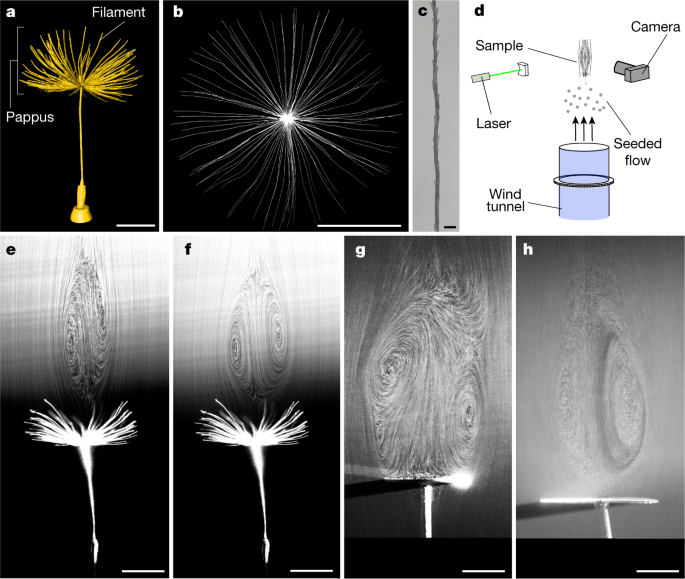A separated vortex ring underlies the flight of the dandelion

Wind-dispersed plants have evolved ingenious ways to lift their seeds. The common dandelion uses a bundle of drag-enhancing bristles (the pappus) that helps to keep their seeds aloft. This passive flight mechanism is highly effective, enabling seed dispersal over formidable distances; however, the physics underpinning pappus-mediated flight remains unresolved. Here we visualized the flow around dandelion seeds, uncovering an extraordinary type of vortex. This vortex is a ring of recirculating fluid, which is detached owing to the flow passing through the pappus. We hypothesized that the circular disk-like geometry and the porosity of the pappus are the key design features that enable the formation of the separated vortex ring. The porosity gradient was surveyed using microfabricated disks, and a disk with a similar porosity was found to be able to recapitulate the flow behaviour of the pappus. The porosity of the dandelion pappus appears to be tuned precisely to stabilize the vortex, while maximizing aerodynamic loading and minimizing material requirements. The discovery of the separated vortex ring provides evidence of the existence of a new class of fluid behaviour around fluid-immersed bodies that may underlie locomotion, weight reduction and particle retention in biological and manmade structures.